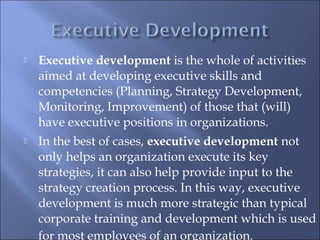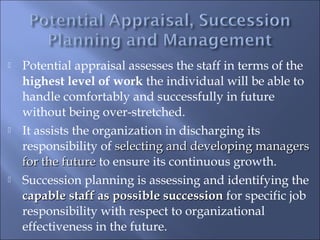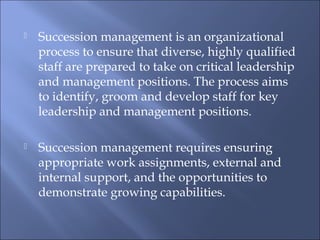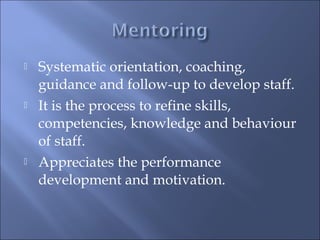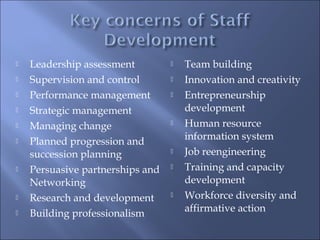This document discusses the importance of staff development for organizational success. It defines staff development as a planned process to improve employee knowledge, skills, and behaviors to enhance personal and organizational effectiveness. The key aspects covered include identifying development needs, designing learning plans, providing training opportunities, and following up on progress. The goal of staff development is to empower employees to achieve their full potential and adapt to changes, while building an organizational culture of excellence.

































